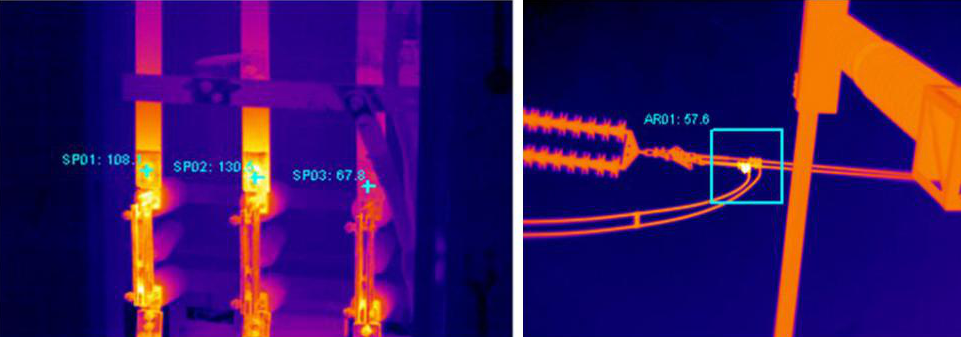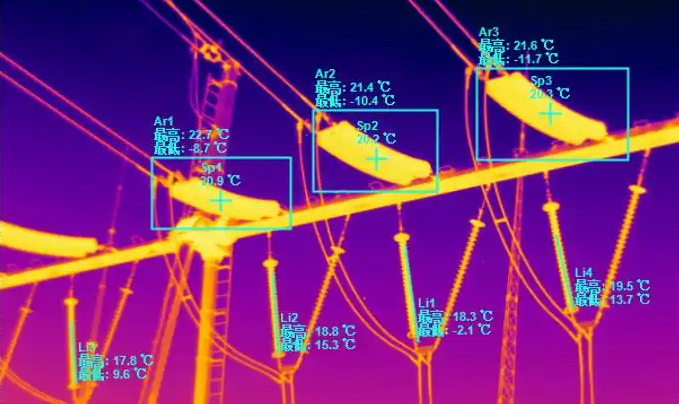Have you ever wondered why some objects appear brighter or darker on a thermal imager than others? There is a complex but fascinating science behind this amazing phenomenon: emissivity. Today, let's talk about how emissivity affects thermal imaging. From basic concepts to practical applications, let's explore this interesting topic together.
What is emissivity?
Emissivity may sound a bit mysterious, but the basic concept is not difficult to understand. Emissivity refers to the radiant energy emitted by a surface at a specific wavelength relative to that of a black body. In other words, emissivity reflects the ability of an object's surface to radiate heat, and the value ranges from 0 to 1.
Blackbody Radiation and the Real World
To understand emissivity, we first need to understand what a black body is. A black body is an idealized object that perfectly absorbs and emits all incident electromagnetic radiation. Simply put, the emissivity of a black body is 1. In the real world, almost no object can achieve this ideal state. Most objects have an emissivity less than 1, which means that they cannot completely absorb or emit radiant energy.
The Basics of Thermal Imaging
Before we dive into the effects of emissivity on thermal imaging, let’s quickly review how thermal imaging works. A thermal imager is a device that detects infrared radiation from the surface of an object and generates images by sensing these radiations. These images usually use colors to represent temperature differences, helping us detect the heat distribution of different objects.

The Effect of Emissivity on Thermal Image Quality
Emissivity directly affects the quality and accuracy of thermal imaging images. If two objects with the same temperature but different emissivities appear in the same thermal imaging image, they will appear different colors or brightness. This is because objects with lower emissivity radiate less infrared energy and appear darker, while objects with higher emissivity appear brighter.
The Importance of Emissivity Calibration
Since emissivity has such a big impact on thermal imaging, it is crucial to perform emissivity calibration when using a thermal imager. Emissivity calibration can help us get more accurate temperature readings, thereby improving the reliability of the measurement results. If this step is overlooked, it may lead to incorrect temperature judgments, which will affect judgments and decisions.
Emissivity Differences in Different Materials
The emissivity of different materials is different. For example, metallic materials typically have low emissivity, while non-metallic materials such as wood and paper typically have higher emissivity. Understanding these differences can help us calibrate and adjust the thermal imager correctly when using it.
Solutions to the emissivity problem
So, what do you do if you are faced with a material of unknown emissivity? One common approach is to use an emissivity patch, which has a known high emissivity and can be placed on the surface of the object being measured to provide an accurate reference. In addition, the emissivity value of a specific material can be obtained through laboratory measurements or reference materials.
Emissivity and temperature relationship
Interestingly, emissivity not only affects the brightness and color of the thermal imaging image, but also affects the accuracy of the temperature measurement. In some cases, emissivity is temperature dependent, that is, changes in the temperature of the object will cause its emissivity to change. Therefore, it is very important to take this into account when accurately measuring temperature.

Common misconceptions
There are also some common misconceptions that need to be cleared up when discussing emissivity. For example, some people believe that smooth surfaces will always have low emissivity, while rough surfaces will have high emissivity. In fact, while the surface characteristics do affect emissivity, they are not the only determining factor, and the properties of the material itself are equally important.
Conclusion
Emissivity is one of the key factors that affect the effectiveness of thermal imaging. By understanding and correctly applying emissivity, we can significantly improve the accuracy and practicality of thermal imaging. Whether in building inspection, medical diagnosis or environmental monitoring, knowledge of emissivity is indispensable. I hope that through this article, you have a deeper understanding of emissivity and can make full use of this important concept in practical applications.


